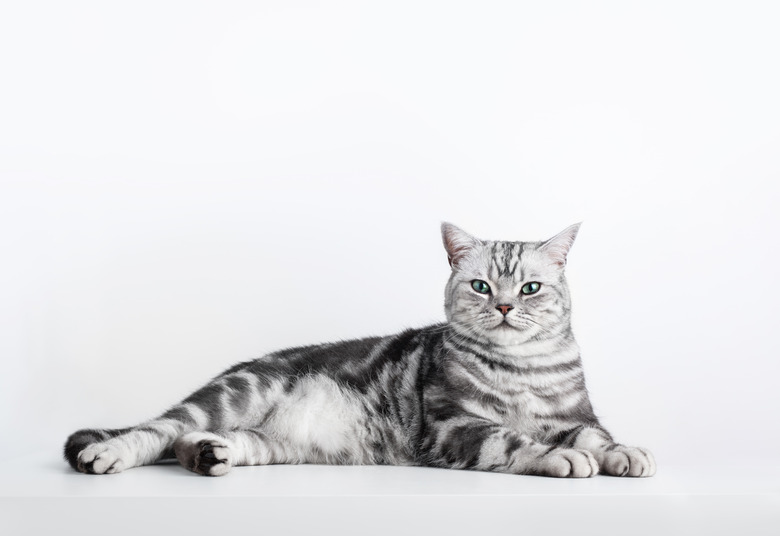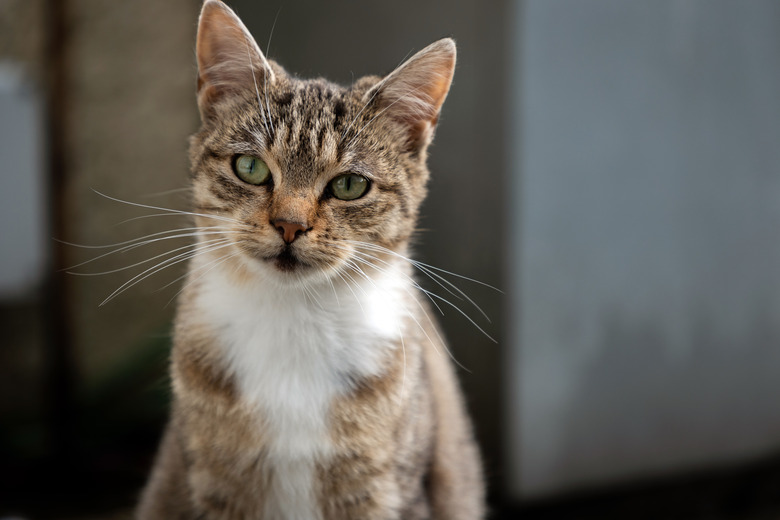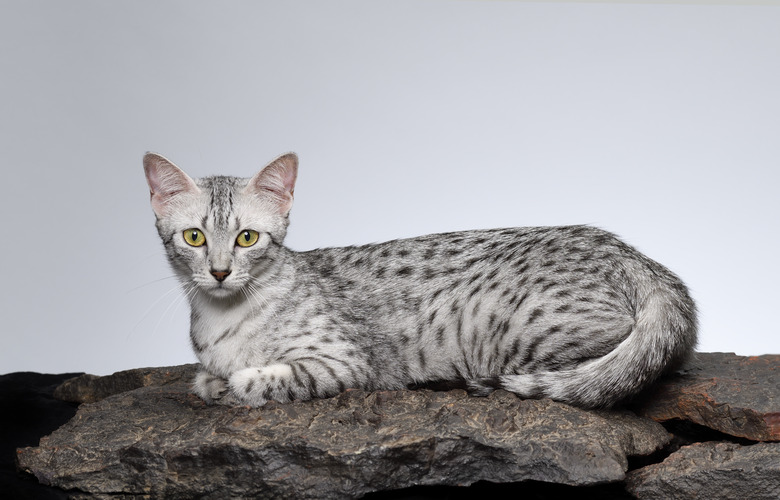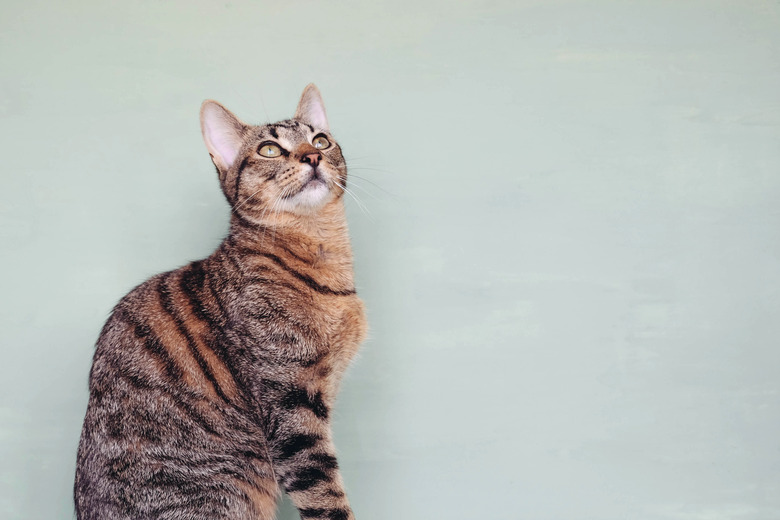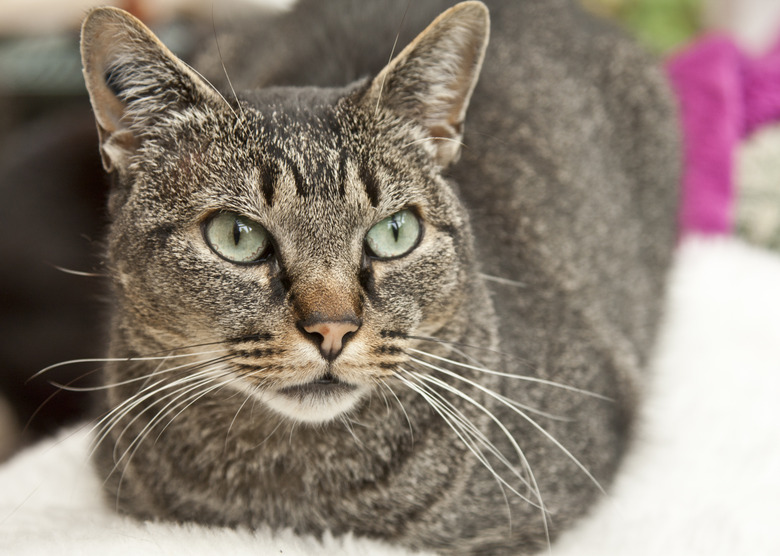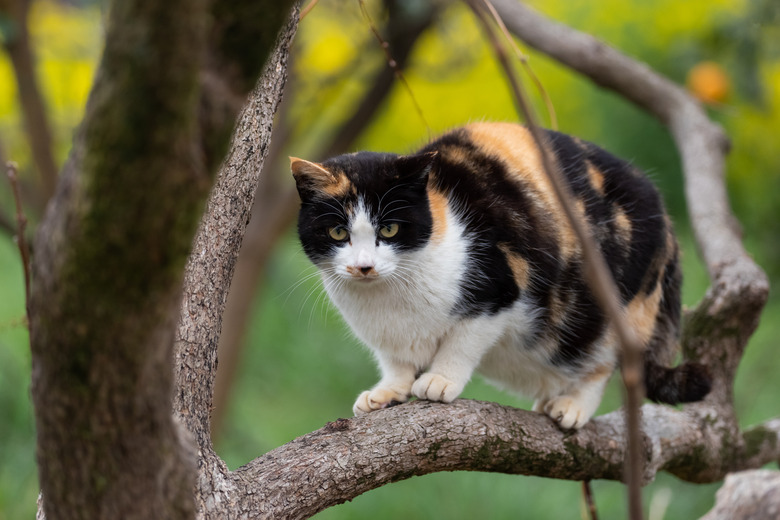The 5 Tabby Cat Patterns
Although some people might think of tabby as a feline breed, the name actually refers to a coat pattern that mixed breed and purebred cats can have. That's right! Many breeds can showcase the tabby pattern, which is considered the most common cat coat pattern.
However, tabby doesn't refer to a single coat pattern. There are multiple types of tabby coats. This means that a group of tabbies could include individuals that look nothing alike. Also, you shouldn't assume that all tabbies will have the same personality because they could be from different breeds.
An outstanding feature that all tabbies have in common is an "M" on their forehead. Other than that, you can have an orange tabby cat, a gray tabby cat, and a brown tabby cat that each has a different pattern.
Here's a breakdown of the five tabby patterns:
1. Classic tabby
1. Classic tabby
The classic tabby coat is also known as the blotched tabby or marbled tabby pattern. The fur features whorls or swirls and thick stripes. On each side of the body, there's also a circular shape that resembles a bullseye. And you should be able to easily see the "M" on the forehead. This is one of the most eye-catching color patterns on the domestic cat. An example of a breed that has this coat pattern is the American shorthair.
2. Spotted tabby
2. Spotted tabby
The spotted tabby pattern features spots of varying shapes and sizes. Some kitties have small spots that are one solid color, while others can have larger spots that are lighter in the middle with a dark border. And these kitties will also have some striping along the tail and legs, creating a nice contrast to the spots on the sides of the body. An example of a feline breed that sports this coat pattern is the Egyptian Mau.
3. Mackerel tabby
Also known as the striped pattern, a mackerel tabby cat has stripes that are thinner than those of the classic tabby, and these are vertical stripes along the sides of the body. You will also notice another stripe that runs along the back. Often described as looking like little tigers, these kitties even feature stripes on their chest as well as bands around the legs and tail. An example of a breed that can feature this pattern is the British Shorthair.
4. Ticked tabby
Ticked tabby cats might only have obvious tabby stripes on their face, tail, and legs. For example, a kitty might have the well-known "M" on the head without any other prominent stripes or spots. On most of the body, there will be agouti hairs — the individual hairs will have light and dark bands — so this pattern might also be referred to as agouti tabby. One of the best examples of a breed that has the ticked tabby coat is the Abyssinian.
5. Patched tabby
If a kitty has a coat with patches of colors – such as a calico cat or tortoiseshell cat – they can have the patched tabby pattern. The tabby spots or stripes may be visible in the patches of color. A torbie is a kitty who has a tabby pattern and tortoiseshell coat color, while a caliby is one that has a tabby pattern and calico coat color. An example of a cat breed that can feature a patched tabby pattern is the Japanese bobtail.
Tabby patterns are common across a range of cat breeds and coat colors, and can be found on longhair and shorthair cats. Always remember that tabby isn't a breed; instead, domestic felines can have one of the five tabby patterns in their fur. From classic and mackerel to spotted, ticked, and patched, each of these patterns has its own set of features, so you can learn to distinguish between them. And if you spot the unique "M" on a kitty's head, you'll know for sure that they're a tabby.
FAQs about tabby cats
FAQs about tabby cats
Here are some additional questions people often ask about tabby cats.
What is the rarest tabby pattern?
The ticked tabby pattern is considered the rarest.
What is the most common tabby pattern?
The mackerel tabby pattern is considered the most common.
How big do tabby cats get?
The size (length, height, and weight) of a tabby cat will depend on the individual's breed, whether they are a purebred or a mixed breed feline.
Is a tabby cat the most common type of cat?
There aren't any tabby cat breeds; only tabby coat patterns. Because tabby markings are found on so many kitties across so many different colors and breeds, they are the most common. In fact, all cats carry the tabby gene, even if it's not apparent in their fur.
